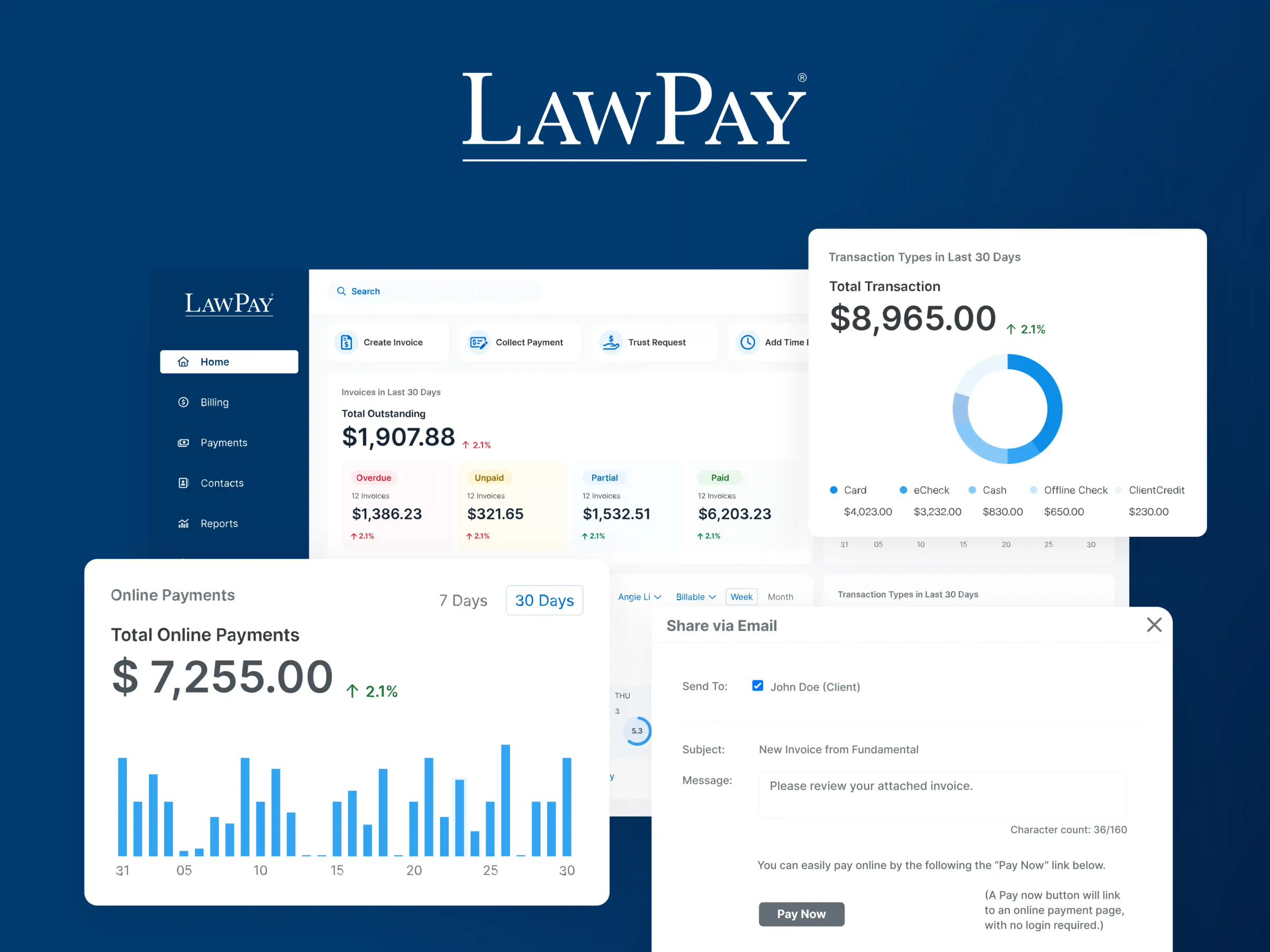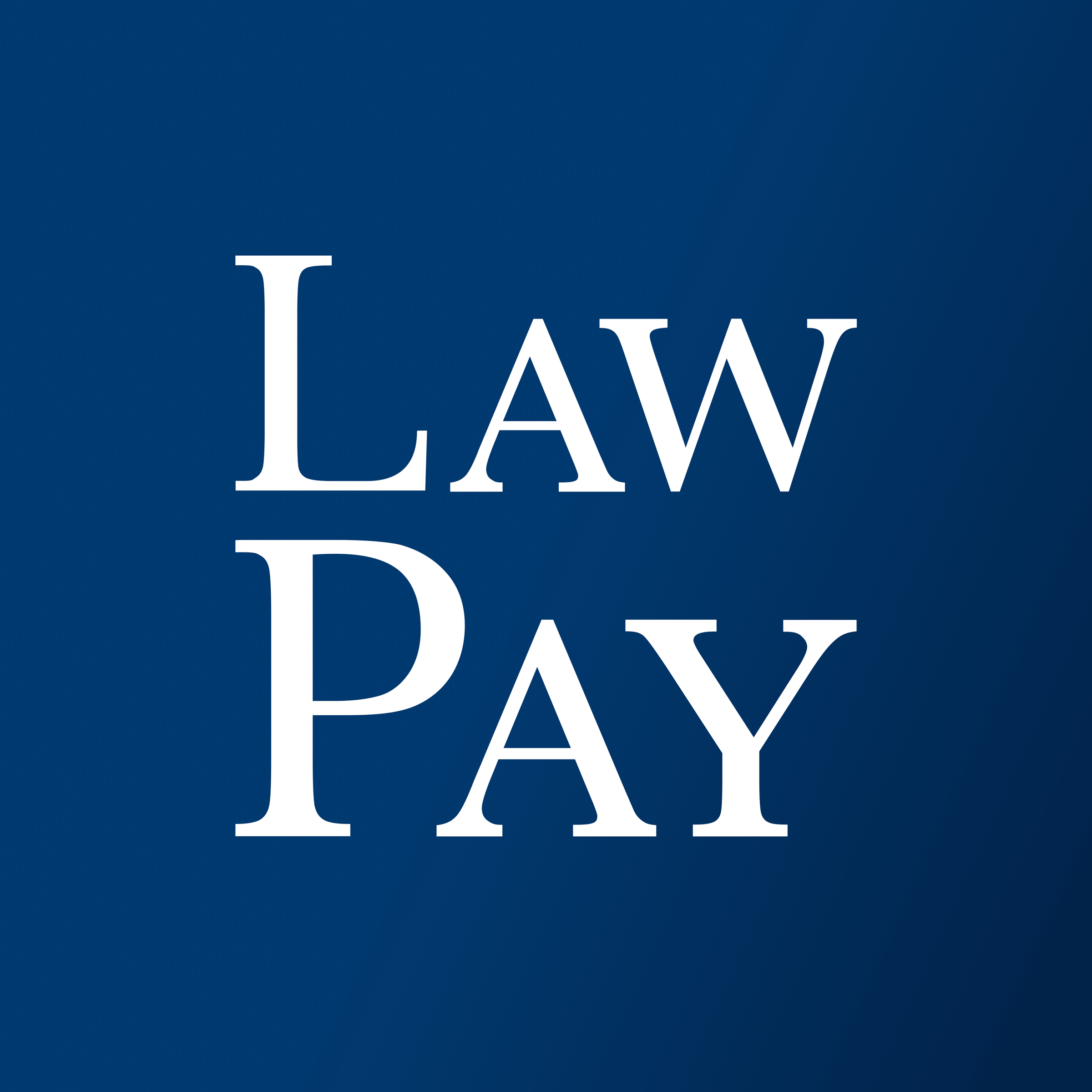Keeping track of various key performance indicators is vital for any law firm, regardless of whether you’re just starting out or looking to grow. But for attorneys who have to divide their tasks into billable and non-billable hours, utilization rate might be one of the most crucial metrics to assess your overall financial health.
Utilization rate might be one of the most crucial metrics to assess your overall financial health.
Gaining a full grasp of your attorney’s utilization rates is a vital first step for improving your business’ efficiency and profitability in the short and long term. But what is utilization rate and, more importantly, how can you track it accurately?
In this post, we’ll go into how to calculate utilization rate, why it’s important, and how you can improve it.
Schedule a demo to see what LawPay can offer your firm.
Book Now
What is Utilization Rate?
Put simply, utilization rate measures the percentage of your lawyer’s total work hours that’s spent on billable hours. This is one of the most important KPIs for law firms and can be used for goal setting or to plug into legal analytics tools.
At its core, utilization rate is a metric that shows an attorney’s overall efficiency and productivity but it doesn’t tell a complete story of a firm’s financial health. Realization rate, which tracks how many billable hours were successfully invoiced, is generally tracked in tandem with utilization rate.
What is the Utilization Rate Formula?
To find the utilization rate over any given time period, use this basic formula: Your firm’s total billable hours divided by your firm’s total worked hours. Multiply the result by 100 if you need the rate as a percentage.
How is Utilization Rate Calculated?
To illustrate, let’s show what the daily utilization rate formula looks like for a law firm with three attorneys. Each attorney works an eight hour day, which puts the total number of billable hours for that law firm at 24 hours for that day. Of those hours, Attorney A spent 2.5 hours on billable work, Attorney B spent only 1.5, and Attorney C spent 4 hours – which means between them they worked 8 billable hours.
(8 billable hours) over (24 total worked hours) = a utilization rate of .33 or 33%
This is only a simplified example, where the employees of the law firm all have equal responsibilities and working hours. In reality, utilization within an organization is more complicated, since different employees will have different levels of experience and responsibility.
Also, there is a lot of non-billable work that is mission-critical for bringing in more revenue. For instance, an experienced lawyer who uses time to meet with potential clients or craft marketing material may have a lower utilization rate, but that non-billable work may be winning more business in the long term.
Why is Utilization Rate Important for Law Firms?
Tracking utilization rate is an important first step to finding ways to ensure your business practices are sustainable and for improving law firm profitability. A utilization rate that’s too high might sound good on paper, but could indicate that important billing and administrative tasks are falling by the wayside. On the other hand, one that is too low can indicate that there are inefficiencies in your day-to-day workload or that you aren’t attracting enough new client work to stay profitable.
Utilization rate might be one of the most crucial metrics to assess your overall financial health.
Put another way, utilization rate is a vital metric in setting achievable law firm goals and identifying opportunities to improve billing models, resource management, and time delegation.
Billing Models
Deciding on a winning pricing model is a key part of ensuring consistent law firm revenue, and factoring in utilization rate can help. By comparing your utilization rate against your budget, your profitability, and other financial factors you can more clearly see if your rates are high enough to cover your costs and stay profitable. Tracking utilization can also help you understand which legal services are most profitable, which can be invaluable for firms considering flexible or consumer-value pricing models.
Resource Management
As a law firm grows, acquires more clients, and takes on more work, it can be easy to lose track of how an attorney’s time is being spent. Keeping track of utilization lets you know if any members of your team are close to burning out or need additional help. A healthy utilization rate isn’t necessarily a high utilization rate, and you may notice that profitability actually goes down as utilization goes up. This is a good signal to hire more people or invest in technology that can help your lawyers thrive.
Time Delegation
Delegating tasks to paralegals or freelancers is a great way to free up more time for mission-critical or strategic work. However, when the time spent on these delegated tasks are paired with utilization rate, it gives a more complete picture of your firm’s financial health. If there are persistent gaps between your utilization and realization rates, it can potentially mean that attorneys are spending too much time on non-billable work or that too much work is being assigned to freelancers.
What is Considered a ‘Good’ Utilization Rate?
It’s important to note that achieving a 100% utilization rate is almost impossible and definitely not advisable. There are only so many hours in a day, and with various non-client tasks like meetings, lunch breaks, administrative work, and more–a certain amount of non-billable work is expected. Various sources show that the average utilization rate for lawyers in the United States sits roughly around 30-35%.
A healthy utilization rate looks different depending on the size of your firm, your practice areas, and other unique factors.
However, there is no single ideal utilization rate for every law firm. A healthy utilization rate looks different depending on the size of your firm, your practice areas, and other unique factors. However, there is an ideal utilization rate formula that uses your financial data to calculate the ideal utilization rate needed to reach a target profit margin.
(Resource Costs + Profit Margin + Overhead) _________________________ = Ideal Utilization Rate (Total available hours) x (Billable Rate))
Calculating this may or may not give you your actual “ideal” utilization rate but it can still be useful for financial reports and planning. For instance, if you find you need an 80% or 90% utilization rate to achieve your desired profit margin, that doesn’t necessarily mean that should become the goal. Instead, it may show that there are overhead costs and inefficiencies to address.
How To Increase Your Firm’s Utilization Rate
The first step to improving your firm’s utilization rate is to track it at regular intervals. Without a data-driven approach, you can’t get an accurate view of your firm’s performance. While an overly high utilization rate isn’t necessarily healthy, there are a number of ways to boost efficiency without burning out your employees.
Set Clear Goals
Once you’re tracking your utilization rate, you can then set clear, realistic goals for improving it. Make sure any goal you set is easily quantifiable and tracked so that you can get an unbiased take on your firm’s overall progress. Setting SMART goals over a shorter period of time also encourages people to set actionable tasks that help improve accountability and ownership.
Utilize Time Tracking Software
If you are not using legal software to help keep track of your billable hours, another way to streamline your time tracking process is to employ a billable hours chart. This is a simple chart that lets lawyers track their billable hours in small increments that are easy for clients to understand and help avoid common invoicing mistakes
It’s impossible to have a clear understanding of how a lawyer is spending their time if you don’t track it. Modern legal billing solutions like LawPay Pro give attorneys’ tools to effortlessly track time entries and expenses, and even link them to cases with built-in timers. Accurate time tracking also helps increase transparency with clients and decreases invoicing errors.
Free Up Time for Billable Work
While some amount of non-billable work is unavoidable, many lawyers end up spending too much time on tasks like data entry, scheduling, billing follow ups, and more. Once firms implement better time tracking and financial forecasting processes, they can better identify the non-billable tasks that can be outsourced entirely or streamlined with legal software. For instance, simply by implementing an online payments platform into a firm’s operations, lawyers can get paid 39% faster, freeing up time for more important tasks.
Automate Non-Billable Tasks
In the past, using software to handle a law firm’s administrative tasks was risky due to the complex rules regarding legal billing and trust account management. However, today, there are a number of practice management and accounting solutions that are specifically built for legal professionals. Automating tasks like client intake, billing and collections, and data entry can significantly boost productivity without adding complexity to day-to-day operations.
Achieve Healthy Utilization with LawPay Pro
Schedule a demo to see what LawPay can offer your firm.
Book Now
Like it or not, there are only so many hours in the day and no attorney can do everything. But by leveraging legal billing platforms like LawPay Pro, law firms can dramatically increase their utilization rates and profits while keeping morale high.
Getting started has never been easier thanks to built-in productivity reports that show you billable and non-billable time along with expenses for each staff member. Combining modern client-friendly payment options and integrations with legal software, LawPay is trusted by legal professionals around the country to increase efficiency and get paid faster.
About the author

The LawPay Team
